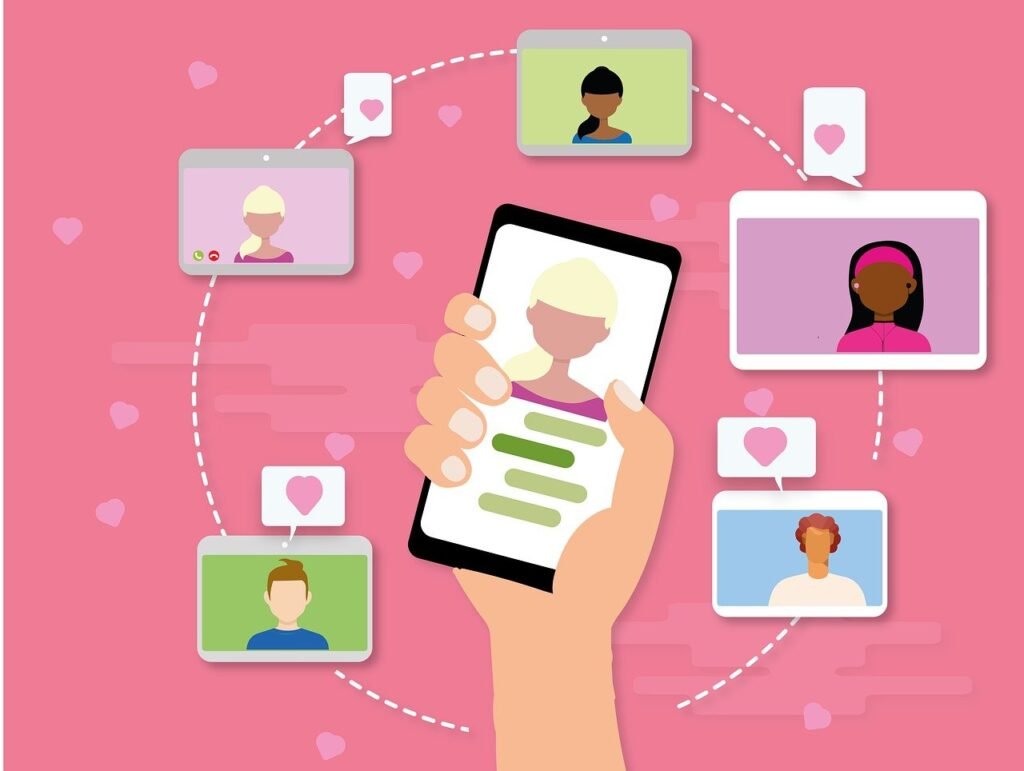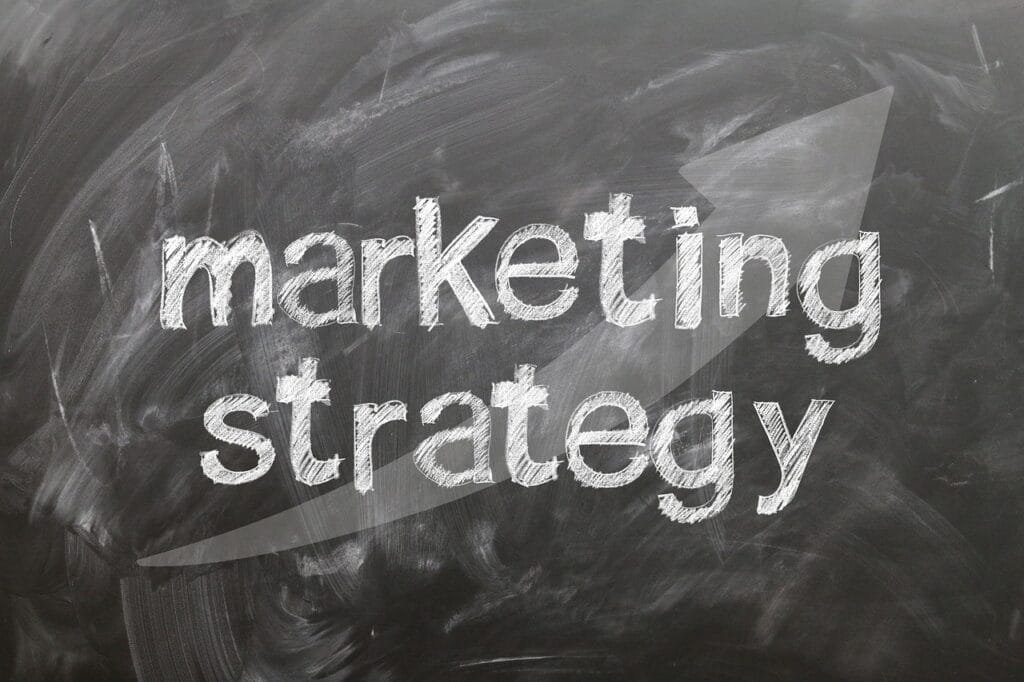This Article has been revised, edited and added to, by Poulomi Chakraborty.
- Step 1: Understanding Your Audience
- Step 2: Setting Clear and Measurable Goals
- Step 3: Choosing the Right Digital Channels
- Step 4: Creating Compelling Content
- Step 5: Promoting Your Content Effectively
- Step 6: Analyzing the Results of Your Campaign
- Implementing Learnings from Campaign Analysis into Future Marketing Strategies
- Exploring Additional Tools and Techniques to Enhance Digital Marketing Strategies
- Conclusion: Mastering Digital Marketing
In today’s rapidly evolving digital landscape, launching a successful marketing campaign is more of a necessity than an option. Whether you’re a small business owner, a marketing professional, or simply looking to boost your online presence, understanding the ins and outs of digital marketing is crucial. This guide will walk you through every step needed to create a campaign that not only reaches but also exceeds your goals. Get ready to dive deep into the world of digital marketing, where we blend strategy with creativity to achieve spectacular results.
Step 1: Understanding Your Audience

The first and arguably most critical step in crafting a digital marketing campaign is understanding who your audience is. This is more than just knowing demographics; it involves grasping their behaviors, preferences, and pain points.
The Essence of Audience Research
Imagine launching a campaign aimed at enticing teenagers to buy a high-end, professional-grade camera. It sounds a bit off, right? That’s because understanding your audience’s needs and capabilities is key to designing a campaign that resonates with them. Audience research involves collecting data through surveys, social media monitoring, and direct feedback to create a comprehensive picture of who you’re marketing to.
Comparing Traditional vs. Modern Methods of Audience Research
Traditionally, businesses relied heavily on direct surveys and focus groups to gather insights about potential customers. These methods, while useful, often limited the scope of data to smaller, more controlled groups. They were also time-consuming and potentially biased, as participants might respond based on what they thought researchers wanted to hear.
On the other hand, modern digital tools offer a broader, more unfiltered view of consumer behavior. Social media analytics, for instance, can reveal what content your audience interacts with most frequently or which products they discuss online. Tools like Google Analytics provide real-time data on how users navigate your website, showing what they like and what they ignore.
Moreover, modern methods allow for continuous audience analysis, which is crucial in a dynamic market environment. You can see trends as they are emerging and adjust your strategies accordingly. This real-time data makes digital tools far superior in terms of both reach and relevance.
Real-World Application
Consider a company like Netflix, which uses vast amounts of data to understand viewer preferences not just globally but also on an individual level. This data-driven approach allows them to recommend shows and movies with uncanny accuracy, keeping users engaged and subscribed. Your digital marketing campaign can similarly benefit from leveraging data to cater precisely to the needs and wants of your audience.
By comparing these methods, it’s clear that integrating modern digital tools into your audience research strategy offers a more detailed, actionable understanding of your target consumers. This depth of insight is what sets the stage for a highly effective digital marketing campaign.
Step 2: Setting Clear and Measurable Goals
Once you have a deep understanding of your audience, the next step is to define what you want your digital marketing campaign to achieve. Setting clear and measurable goals is crucial because it not only guides your strategy but also provides a benchmark against which to measure your campaign’s success.
The Importance of SMART Goals
The best way to set goals for your campaign is to make them SMART: Specific, Measurable, Achievable, Relevant, and Time-bound. This method ensures that your goals are well-defined and attainable within a reasonable timeframe.
Specific
Your goals need to be clear and specific to be effective. Instead of saying “increase website traffic,” a specific goal would be “increase website traffic by 20% within the next three months.” This gives your campaign a clear target and focus.
Measurable
A goal should be measurable so that you can track progress and know when it has been achieved. With digital marketing tools, nearly every aspect of a campaign can be quantified, whether it’s click-through rates, number of downloads, or page views.
Achievable
While ambition is important, your goals also need to be realistic and attainable. This doesn’t mean setting easy targets; rather, it involves recognizing the resources available and setting challenging yet feasible goals.
Relevant
Ensure your goals are relevant to the direction you want your business to take. Aligning your marketing goals with your business objectives is key to ensuring that the effort put into digital marketing translates into real business growth.
Time-bound
Every goal needs a deadline. Without a time frame, there’s no sense of urgency or indication of when you should start evaluating your efforts.
How Goal Setting Influences Campaign Strategy
Setting clear goals influences every decision you make in your campaign—from the platforms you choose to the messaging and content you create. For instance, if your goal is to increase brand awareness, you might focus on reaching a broad audience through social media and content marketing. On the other hand, if your goal is to increase sales, you might invest more in SEO and PPC campaigns to drive traffic to your product pages.
Real-World Example
Let’s look at a startup that aims to increase its market share. By setting a goal to increase new customer sign-ups by 30% over six months through targeted social media ads, they can specifically tailor their content and ad spend to reach potential customers who are most likely to convert, based on the audience data they collected previously.
This precise goal setting not only makes the campaign more effective but also makes it easier to analyze and understand what works and what doesn’t. It allows marketers to pivot or scale their strategies based on real-time data and results.
Step 3: Choosing the Right Digital Channels

After setting your goals, the next crucial step is to select the digital channels that will help you reach your audience most effectively. Each channel has its strengths and can be utilized to achieve different aspects of your digital marketing strategy.
Understanding Different Digital Channels
Digital channels vary widely in their format, audience, and the type of engagement they facilitate. Here’s a breakdown of some key platforms:
Social Media Platforms
Social media channels like Facebook, Instagram, Twitter, and LinkedIn offer unique opportunities to engage directly with your audience. These platforms are great for building brand awareness, fostering community engagement, and even direct sales through social commerce features.
Email Marketing
Email remains a powerful channel for direct communication with your customers. It’s ideal for delivering personalized messages, promotions, and content directly to individuals who have already shown interest in your brand.
Content Marketing
This involves creating valuable content that attracts, engages, and retains an audience by establishing you as a thought leader in your niche. This can be through blogs, videos, podcasts, and more. Content marketing works well for long-term strategies aimed at building brand authority and boosting search engine rankings.
Search Engine Optimization (SEO) and Pay-Per-Click (PPC) Advertising
SEO helps your website rank higher in search engine results through organic strategies, while PPC offers a way to jump to the top of search engine results through paid ads. Both strategies drive traffic to your website but require different levels of investment and expertise.
Choosing Based on Your Campaign Goals
Selecting the right channels largely depends on your specific campaign goals and your understanding of where your audience spends their time. If your goal is to increase brand awareness, social media and content marketing might be your best bet. On the other hand, if you’re looking to drive immediate sales, PPC and email marketing campaigns might be more appropriate.
Real-World Scenario
Consider a company that sells fitness equipment online. To increase sales, they might use:
- PPC advertising to capture high intent buyers by targeting keywords related to fitness equipment.
- Social media marketing on platforms like Instagram and Facebook to showcase their products in use and share customer testimonials.
- Content marketing to provide valuable fitness tips, workout plans, and nutrition advice that not only helps their audience but also builds trust in their brand.
By integrating these channels, the company can create a holistic marketing strategy that not only reaches potential customers at various stages of the buyer’s journey but also maximizes the chances of conversion.
Monitoring and Adjusting
Once you’ve chosen your channels, continually monitor their performance against your goals. Use analytics to understand which channels are performing well and which are not, allowing you to reallocate resources and adjust strategies as needed. This dynamic approach ensures that your digital marketing efforts remain effective and efficient over time.
Step 4: Creating Compelling Content
Once you’ve selected your digital channels, the next step is to create content that not only attracts attention but also engages and converts your audience. Compelling content is at the heart of any successful digital marketing campaign.
Understanding What Makes Content Compelling
Compelling content is not just about being interesting; it’s about relevance, value, and resonance with your audience. It should address their needs, solve their problems, or answer their questions. Here’s how to ensure your content hits these marks:
Relevance
Your content must be closely aligned with both the interests of your audience and your campaign goals. For instance, if you’re targeting pet owners, articles about pet care and pet health would be more relevant than general wildlife content.
Value
Provide tangible benefits through your content. This could be through how-to guides, tips, tutorials, or even entertainment. The key is that the audience should feel they’re gaining something by consuming your content.
Emotional Connection
Content that evokes emotion—whether it’s happiness, empathy, or excitement—tends to be more memorable and shareable. Storytelling can be a powerful technique to connect on an emotional level, making your brand more relatable.
Types of Content to Consider
Depending on your channel strategy, different types of content can be employed to achieve different goals:
Blog Posts and Articles
Ideal for SEO and establishing thought leadership, these should be informative, well-researched, and optimized for search engines.
Videos
Videos are great for engagement and can significantly increase the amount of time users spend interacting with your content. They are particularly effective on social media and can range from educational tutorials to behind-the-scenes looks at your company.
Infographics and Visual Content
These are excellent for conveying complex information in a digestible format and are highly shareable, making them useful for social media and blogs.
Email Newsletters
Personalize these to maintain ongoing relationships with your customers, providing them with valuable content, company news, and special offers tailored to their interests.
Crafting Your Content Strategy
Step-by-Step Approach
- Identify the Purpose: Each piece of content should have a clear purpose that ties back to your broader campaign goals.
- Understand the Format: Choose the right format for your content based on the channel and what your audience prefers.
- Create a Content Calendar: Plan your content release to maintain a consistent schedule that keeps your audience engaged without overwhelming them.
- Production and Review: Ensure your content is high-quality and error-free. This might involve multiple stages of editing and review, especially for written content.
- Launch and Promote: Release your content through the chosen channels and promote it actively to ensure it reaches your target audience.
- Analyze and Optimize: Use analytics to track how your content performs and make adjustments to improve future content.

Related: Check out our free SEO suite

Step 5: Promoting Your Content Effectively
Creating great content is only half the battle; promoting it effectively ensures it reaches the right audience at the right time. Promotion is critical in driving traffic to your content and achieving your campaign goals.
Understanding Promotion Channels
Here’s a look at several effective channels and techniques for promoting your content:
Social Media
Social media platforms are ideal for sharing content because they allow for broad distribution and organic engagement. Tailor your posts to the platform to maximize engagement, using hashtags, stories, or features like Instagram Reels or Twitter threads to increase visibility.
Email Marketing
Use email marketing to send content directly to those who have already shown interest in your brand. Segment your email list to deliver targeted content that meets the specific needs and interests of different user groups.
Paid Advertising
Paid channels can help amplify your reach, especially when trying to penetrate a new market segment or boost visibility for a new product launch. This includes PPC campaigns, sponsored content on social media, or display ads.
Influencer Partnerships
Partnering with influencers can extend your reach within a specific community. Choose influencers whose audiences overlap with your target demographic and whose brand values align with yours.
Best Practices for Effective Content Promotion
Timing is Everything
Understand the best times to post on different platforms based on when your audience is most active. Use scheduling tools to maintain consistency in posting.
Engage and Respond
Engagement doesn’t end at posting content. Actively engage with your audience by responding to comments and messages. This interaction can foster a stronger community and encourage more shares and views.
Optimize for Each Channel
Customize your content for each platform. What works on Facebook may not work on Twitter or LinkedIn. Tailor your message to fit the platform’s preferred content style and format.
Monitor and Adapt
Use analytics to track the performance of your promotion strategies. This data will tell you what’s working and what’s not, allowing you to adapt and refine your approach for better results.
Real-World Example of Effective Content Promotion
Consider a digital marketing agency that launched a comprehensive guide on SEO best practices. They could use the following multi-channel approach to promote their content:
- Social Media: Share tips from the guide in a series of posts, using eye-catching graphics and short videos to illustrate points.
- Email Marketing: Send out a newsletter featuring a summary of the guide with a call-to-action (CTA) leading to the full content.
- Paid Advertising: Run targeted ads on LinkedIn to reach other businesses that might benefit from advanced SEO strategies.
- Influencer Partnerships: Collaborate with well-known SEO experts to share the guide through their networks.
By leveraging these channels, the agency ensures that their valuable content reaches a wide audience, drives traffic back to their site, and ultimately increases client inquiries about their SEO services.
Step 6: Analyzing the Results of Your Campaign

After you’ve launched and promoted your digital marketing campaign, the next critical step is to analyze the results. This analysis not only shows how well your campaign met its goals but also provides insights that can improve future campaigns.
Understanding Campaign Analytics
Campaign analysis involves collecting and interpreting data to evaluate the performance of your marketing efforts. Here’s what you typically look at:
Key Performance Indicators (KPIs)
Identify which metrics are most important based on your campaign goals. Common KPIs include website traffic, conversion rates, engagement rates on social media, and ROI.
Tools for Tracking and Analysis
Leverage tools like Google Analytics, social media insights, and email marketing software to gather data. These tools provide comprehensive metrics such as page views, clicks, shares, likes, and more.
A/B Testing
This involves comparing two versions of your campaign to see which performs better. A/B testing can be applied to anything from email marketing campaigns to landing pages, helping you refine your approach.
Steps to Analyze Your Campaign
Collect Data
Start by collecting data from all relevant sources. This might include analytics from your website, feedback from customers, sales figures, and any other data that measures your campaign’s performance.
Measure Against Goals
Compare your results against the SMART goals you set earlier. Assess whether the campaign met, exceeded, or fell short of these objectives.
Identify Successes and Areas for Improvement
Determine what elements of your campaign worked well and what didn’t. Perhaps your social media ads drove a lot of traffic to your website, but your email campaign didn’t perform as expected. Understanding these dynamics is key to improving future campaigns.
Generate Insights for Future Campaigns
Use the data you’ve gathered to inform your future marketing strategies. Insights gained from one campaign can provide valuable lessons that shape how you approach your next project.
Real-World Application
Imagine a company that launched a new product with a comprehensive digital marketing campaign. Post-campaign analysis showed that while their social media videos attracted a high level of engagement, their PPC ads had a lower than expected click-through rate.
By delving deeper, they might find that the ad copy or the visuals used in the PPC campaigns were not compelling enough or that the keywords targeted were not optimal. These insights would then be used to tweak future ads, possibly testing different messages or visuals to see what resonates better with their audience.
Importance of Continuous Learning
Digital marketing is dynamic, and consumer behavior changes frequently. By consistently analyzing the outcomes of your campaigns, you not only improve the effectiveness of future efforts but also stay adaptable to market changes. This continuous learning process is crucial to staying competitive in a fast-paced digital world.
Implementing Learnings from Campaign Analysis into Future Marketing Strategies

The insights you gain from analyzing your digital marketing campaign are invaluable for refining and enhancing your future strategies. Implementing these learnings effectively requires a structured approach that ensures continuous improvement and adaptation.
Step-by-Step Process for Implementing Learnings
Document Insights and Key Learnings
Start by creating a comprehensive report or database of all the insights gathered from your campaign analysis. This should include what worked, what didn’t, and any patterns or unexpected results. Make sure to document both quantitative data (like conversion rates) and qualitative feedback (such as customer surveys).
Prioritize Areas for Improvement
From your insights, identify which areas most urgently need improvement. For instance, if your data shows that certain types of content did not perform well, you might prioritize developing new content strategies. Alternatively, if a particular advertising channel brought a high return on investment, you might plan to allocate more budget there.
Develop Actionable Strategies
For each area of improvement, develop specific, actionable strategies. For example, if the campaign analysis suggests that email newsletters had low engagement rates, consider testing different subject lines, email layouts, or send times to see what improves open rates and interactions.
Implement Changes Gradually
When making changes based on your analysis, it’s wise to implement them gradually and systematically. This allows you to test the effectiveness of each change without overwhelming your team or your audience. It also provides clear data on what impact each specific change has.
Monitor the Impact of Changes
As you implement new strategies, closely monitor their performance. Continue to use the same KPIs and tools to assess whether the changes are moving you closer to your goals. This monitoring should be ongoing, with regular reporting intervals set.
Foster a Culture of Continuous Improvement
Creating a culture that embraces continuous improvement and learning is crucial. Encourage your team to seek feedback, share insights, and stay curious about new tools, trends, and strategies. This cultural mindset will help keep your marketing efforts innovative and responsive to changes in the market.
Example of Strategy Implementation
Suppose a retailer’s previous campaign analysis showed that while their blog posts on product care were well-received, the product demonstration videos did not engage as expected. The action steps might look like this:
- Content Reevaluation: Assess the content and presentation style of the videos.
- A/B Testing: Test different formats, such as shorter videos, more visually engaging graphics, or a series featuring real customer testimonials.
- Audience Feedback: Conduct a survey or use social media polls to get direct feedback from the audience on what type of video content they would find helpful or engaging.
- Implementation of Feedback: Based on feedback, produce new video content and monitor its performance compared to previous metrics.
- Regular Review: Set a review period after implementing new video strategies to analyze performance and plan further adjustments.
Key Takeaway
The ability to implement learnings from campaign analysis effectively into future strategies is what differentiates good marketing teams from great ones. It’s about being agile, responsive, and always willing to learn from past performances to optimize future outcomes. By continuously refining your strategies based on solid data and feedback, you ensure that your digital marketing efforts remain effective and aligned with your audience’s evolving needs.
Exploring Additional Tools and Techniques to Enhance Digital Marketing Strategies

In the digital marketing world, staying ahead often involves leveraging the latest tools and techniques. Here’s a roundup of some advanced tools and innovative strategies that can give your campaigns a competitive edge.
Advanced Tools for Digital Marketers
Customer Relationship Management (CRM) Software
CRM tools are essential for managing interactions with customers and prospects. They help you track every interaction and consolidate all customer information into one database, enabling personalized marketing at scale. Popular CRM platforms include Salesforce, HubSpot, and Zoho.
Marketing Automation Platforms
These platforms automate repetitive tasks such as emails, social media posting, and other website actions. Tools like Marketo, Pardot, and Mailchimp provide powerful automation capabilities that can save time and enhance the effectiveness of your campaigns.
Analytics and Data Visualization Tools
Advanced analytics tools like Google Analytics 360, Adobe Analytics, and Tableau help you dive deeper into your data. They offer comprehensive insights and visualizations that make it easier to understand complex data sets and make informed decisions.
AI and Machine Learning
AI tools can significantly enhance various aspects of digital marketing, from predictive analytics to customer service. AI-powered chatbots, for instance, can improve customer interaction by providing instant responses and personalized recommendations. Tools like IBM Watson and Google AI offer platforms to incorporate AI into your marketing strategies.
Innovative Techniques in Digital Marketing
Personalization at Scale
Using data collected from various touchpoints, you can create highly personalized marketing messages. Techniques like dynamic content personalization can change the content of a website dynamically based on the user’s past behavior or demographic data.
Video Marketing
As video continues to dominate internet traffic, innovative video marketing strategies like live streaming, 360-degree videos, and interactive videos are becoming crucial. These techniques can help create more engaging and immersive experiences for users.
Influencer Marketing
While not new, influencer marketing continues to evolve. Moving beyond traditional influencers, brands are now partnering with micro-influencers and even nanoinfluencers—people with smaller but highly engaged audiences—to tap into niche markets.
Voice Search Optimization
With the rise of smart speakers and voice-activated devices, optimizing for voice search is becoming increasingly important. This involves using more natural language phrases and question-based content in your SEO strategy.
Augmented Reality (AR) and Virtual Reality (VR)
These technologies offer new ways to engage customers by creating immersive experiences. For example, AR can allow customers to visualize how a product might look in their home before making a purchase, while VR can create completely immersive brand experiences.
Putting It All Together
Each of these tools and techniques can be integrated into your digital marketing strategy to enhance its effectiveness. The key is to choose the right mix based on your specific goals, audience, and the nature of your products or services. It’s also crucial to stay updated with emerging technologies and trends to continuously adapt and improve your strategies.
By embracing these advanced tools and innovative techniques, you can not only improve the efficiency of your campaigns but also provide richer, more engaging experiences for your customers, ultimately driving better results.
Conclusion: Mastering Digital Marketing
Launching and running a successful digital marketing campaign involves a deep understanding of your audience, setting clear goals, selecting the right channels, creating compelling content, and continuously promoting and analyzing your efforts. By integrating modern tools and embracing innovative techniques, you can enhance your strategies and ensure your campaigns resonate with your target audience. Always remember the importance of adapting to changes—what works today might not work tomorrow, so stay agile and informed about new developments.
Embrace a culture of testing and learning, and use your insights to refine and improve your campaigns continuously. Ultimately, the key to digital marketing success lies in your ability to connect with your audience in meaningful ways, leveraging technology not just to reach them, but to engage them deeply and effectively. By focusing on these principles, you’ll not only achieve your campaign goals but also drive sustained growth for your business in the ever-evolving digital landscape.
Read Next





















